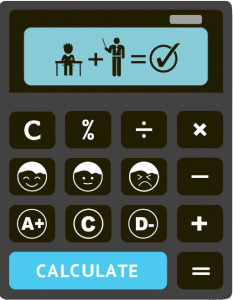Overview
Numbers are everywhere in our daily lives, and understanding how they work is important for many reasons. From counting money to understanding the number of items in a store, numbers play an essential role. In year 5 maths, you will learn about the number system with decimals.
Learning Outcomes
After you have read this article, you will:
- Know the place values in decimal numbers up to a thousandth
- Understand the multiplicative relationship between consecutive places extended to decimal numbers
- Learn how renaming decimals can help with mental computations
- Be able to plot decimal numbers on a number line
- Be able to compare decimal numbers
Place Values in Whole Numbers
In the number system, each digit in a number has a specific value based on its position. For example, in the number 1,234,567, the digit 1 is in the millions place, the digit 2 is in the hundred thousands place, the digit 3 is in the ten thousands place, the digit 4 is in the thousands place, and so on.
The place value system allows us to represent numbers that are much larger than what we can count using our fingers or small objects.
Place Values in Decimal Numbers
Decimal numbers include a decimal point, separating the whole number and the fractional part.
In the number 735.816, the digit 7 is in the hundreds place, the digit 3 is in the tens place, and the digit 5 is in the ones place. The digit 8 is in the tenths place (8 parts out of 10), the digit 1 is in the hundredths place (1 part out of 100), and the digit 6 is in the thousandths place (6 parts out of 1000).
So, the number is seven hundred thirty-five and eight hundred sixteen thousandths.
Relationship Between Consecutive Places
You have already learnt that the relationship between consecutive places is based on 10. Each place value is 10 times larger than the one to its right and ten times smaller than the one to its left. This rule applies to decimal numbers too.
For example, in the decimal number 735.816, the digit ‘1’ is in the hundredths place, and the digit ‘8’ is in the tenths place. The tenths place is ten times larger than the hundredths place. Likewise, the hundredths place is ten times larger than the thousandths place.
Understanding this relationship between consecutive places is important for reading and writing numbers in different forms, such as standard form, expanded form, and word form.
Decimals on a Number Line
Decimal numbers can be represented on a number line like whole numbers. Look at the figure below. Do you know what number is exactly halfway between 2.3 and 2.4?
To answer the question, count the number of divisions from 2.3 to 2.4. There are ten divisions, right? So each division is one-tenth of the distance between 2.3 and 2.4.
Now, think of 2.3 as 2 and 3 tenths or 2 and 30 hundredths. Similarly, 2.4 is 2 and 40 hundredths. As halfway between 30 and 40 is 35, the number right in the middle is 2 and 35 hundredths, or 2.35. The remaining numbers are also shown in the number line below.
Comparing and Ordering Decimal Numbers
You can use the concept discussed above to understand that 2.3 < 2.35 < 2.4. If this looks confusing (35 is less than 4?), replace 2.3 with 2.30 (as 3 tenths is the same as 30 hundredths), and 2.4 with 2.40, so that 2.30 < 2.35 < 2.40.
Wrap Up
Understanding the number system is essential for many aspects of our lives. From basic math operations to complex scientific calculations, numbers are an integral part of our world. By understanding place values in whole numbers and decimals, the relationship between consecutive places, and how to rename decimals, you can develop a strong foundation in math that will serve you well in the future.
Need help solving year 5 maths questions? Consider contacting us today.








